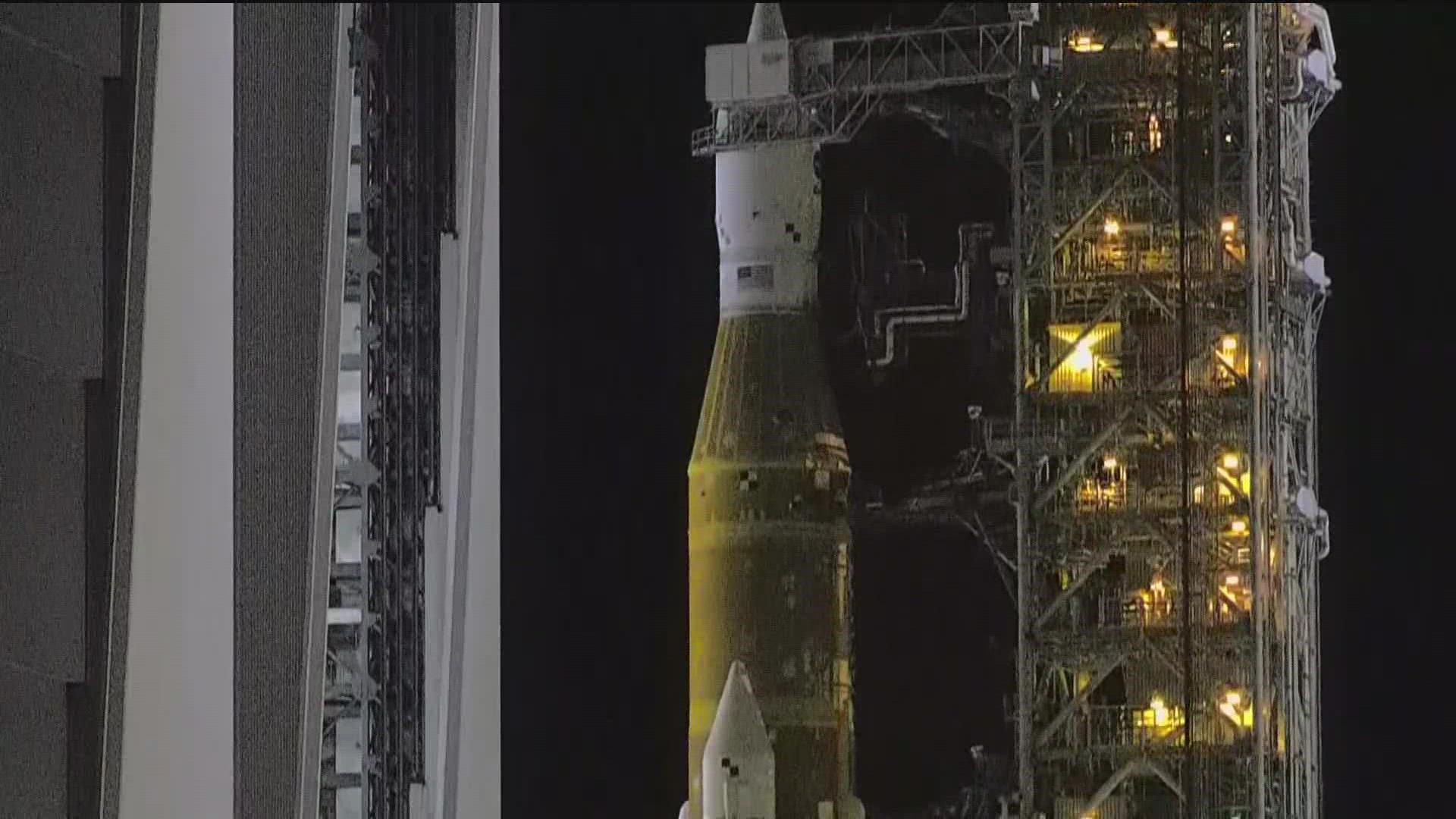SAN DIEGO — The most powerful rocket ever built by NASA did not leave the launchpad Monday morning, after several issues were detected including a fuel leak and engine 3 was not cooling properly, causing NASA to scrub the launch.
“The exhaust is thousands of degrees and so you have to cool those engines down or else they’ll melt, so there are lines of coolant that go into them and keep them cool,” said SDSU Professor of Astronomy, Robert Quimby. “They were testing those lines and making sure they could cool down those engines and one of them did not cool down.”
Quimby is also Director of the Mount Laguna Observatory and he has been following the work of an SDSU alumna, Shideh Naderi, who works for NASA on a team that is developing technology for fuel transfers using magnets.
Editor's Note: This story initially references that Naderi worked with a team involved directly with the Artemis project. We regret the error.
“She’s come up with a system for how we can move the fuel, this very, very cold fuel, from one place to another in a harsh environment like the moon,” said Quimby. “She came up with a way of using magnets to make sure, first of all, your couplings stay together, and you don’t have to fuss with them. They’ll just pop right together. And to make sure you can transfer the fuel without having problems with the moon dust.”
Naderi’s accomplishments with NASA are inspiring other young women at SDSU in the Aerospace Engineering program.
“Knowing that there’s space for SDSU at NASA is inspiring. It definitely lets us know that, ok, if we work hard, stay disciplined, stay focused, we can achieve these opportunities just like they did,” said SDSU Aerospace Engineering student, Kaylin Borders.
She and Nathalia Del Callejo are leaders in the ‘Women in Aeronautics and Astronautics Club’ at SDSU, and they say even though the launch didn’t happen Monday, progress was made.
“Even though it’s a scrubbed launch, it’s not a failed launch,” said Del Callejo. “The engineers still learned from it and are able to make those changes and are able to make the next opportunity an even better one, and that way, once this rocket does hold humans, it will be absolutely safe.”
NASA says the next available window for launch is this Friday, September 2.
WATCH RELATED: 'You don’t want to light the candle until it’s ready to go': NASA scrubs moon rocket launch (August 2022)

